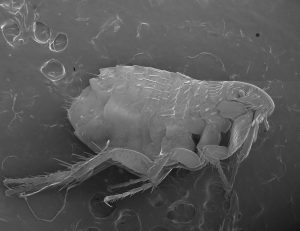These are chip resistors that were reported to be failing with high resistance.

This is a BSE SEM image of a microsection through the approximate centerline of the resistor.

This solder joint appeared to have failed in a brittle failure mode at the interface between the solder and the nickel barrier plating (i.e. brittle interfacial fracture).

The same issue was found on multiple PCBAs suggesting that this was some sort of systemic failure.

The analysis results suggested that the resistor failures were most likely caused by mechanical stress (likely in bending) at high strain rate. Another factor in the failure might have been the PWB cut-out nearby the resistors.
Other factors to consider are (1) degree of warpage of the PCBA after reflow and (2) relatively low PWB stiffness which could be improved by increasing the PWB thickness or adding stiffeners for example.
Response to Kurt Larson’s comment … ” It is also likely the reflow process held the solder in liquidous for too long and a too high peak temperature. This would dissolve the solderable layer on the resistor base plating into the greater bulk of the solder fillet. This is a common problem when the temperature of the reflow process is increased to speed up the process, and the process is not profiled for assemblies of varying thermal mass.”


These images suggest that in this case the reflow process was nominal based on the thickness of the nickel diffusion barrier plating.

















 This is a 2 kV SE image of the flea.
This is a 2 kV SE image of the flea. 












